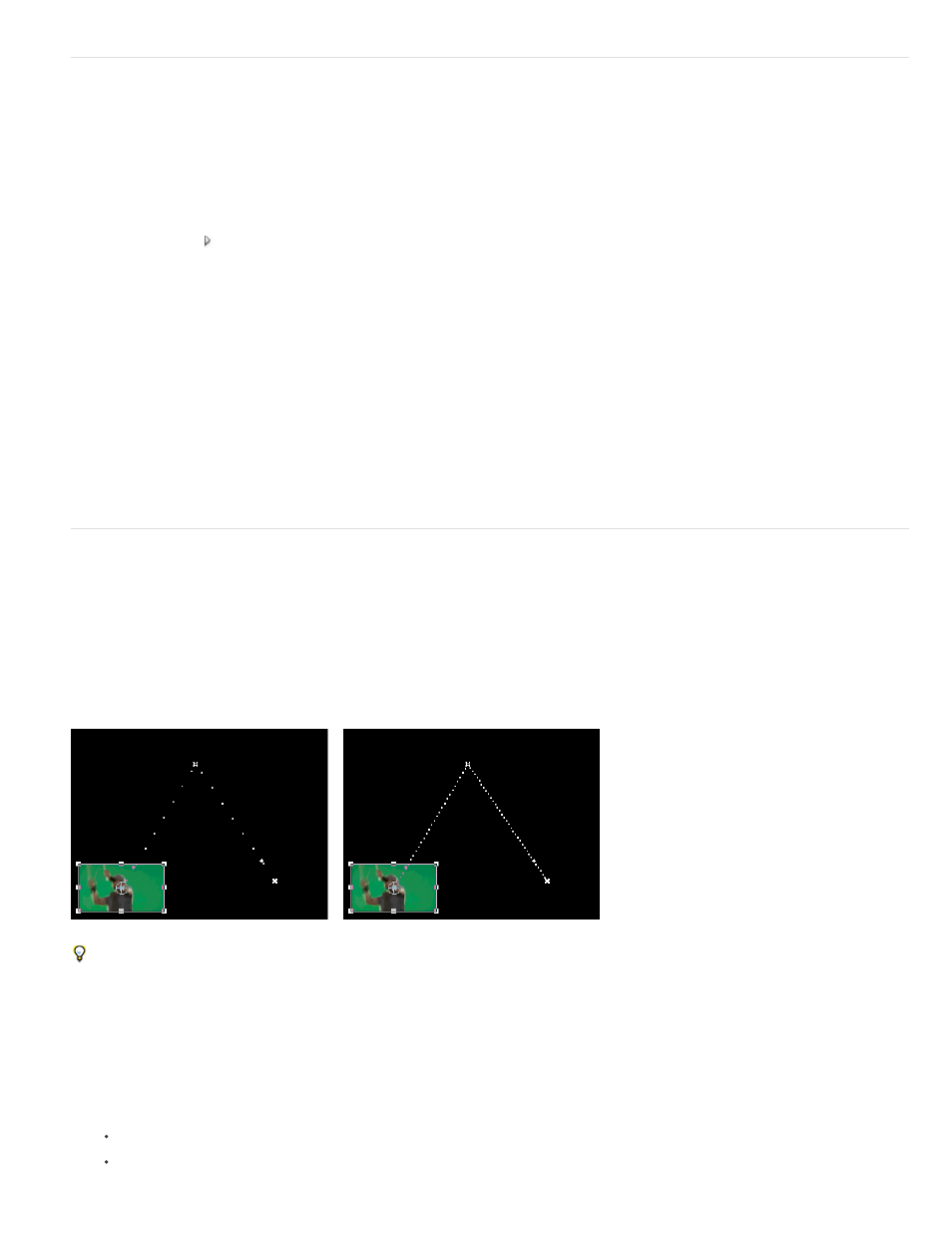Scale assets animate motion in the program monitor, Scale assets, Animate motion in the program monitor – Adobe Premiere Pro CS6 User Manual
Page 439

Scale assets
When you drag an asset into a sequence, by default Premiere Pro preserves its frame size and centers the asset in the program frame.
Alternatively, you can automatically scale imported assets to the project’s default frame size. You can rescale the asset without distortion if its pixel
aspect ratio has been interpreted correctly.
Scale assets manually
1. Drag the asset into a sequence and select the asset.
2. Open the Effect Controls panel.
3. Click on the arrow next to the Motion effect to reveal the motion controls.
4. Click on the arrow next to the Scale control within the Motion effect to reveal the Scale slider.
5. Move the Scale slider left or right to decrease or increase the size of the frame.
Scale assets to frame size
1. Right-click (Windows), or Control-click (Mac OS) an asset in a Timeline.
2. Select Scale To Frame Size.
Andrew Devis explains how the 'Default Scale to Frame Size' preference works
Scale assets automatically
1. Choose Edit > Preferences > General (Windows) or Premiere Pro > Preferences > General (Mac OS).
2. Select Default Scale To Frame Size.
3. Click OK.
Animate motion in the Program Monitor
You can create animations, insets, and split screens by manipulating a clip directly in the Program Monitor and setting keyframes for the Motion
effect. By adjusting a clip’s position and scale in the Program Monitor, you reveal clips in the tracks below it and can create interesting
compositions.
When you animate a clip’s position, the clip’s motion is represented by a motion path in the Program Monitor. Small white Xs represent keyframed
positions, dotted lines represent positions at interpolated frames, and the circular clip anchor point symbol represents a spot in the clip, its center
by default, at the current frame. The spacing between dots indicates the speed between keyframes: wide spacing shows fast motion, while tightly
spaced dots show slower motion.
For more information about adding motion to clips in Premiere Pro,
by Learn by Video and Video2Brain by Jan Ozer.
Clip in Program Monitor showing a motion path with fast motion (left) compared to slow motion (right)
To quickly apply Motion effect changes to a sequence clip, you can click the image in the Program Monitor and begin manipulation (without first
clicking the Transform icon next to the Motion effect in the Effect Controls panel). If you adjust the position of the image, you can further refine
its movement by using the Bezier keyframes.
Animate a clip in the Program Monitor
When the Motion effect is selected in the Effect Controls panel, you can manipulate a clip in the Program Monitor. Create an animation by setting
keyframes for one or more of the Motion effect’s properties (for example, Position).
1. Select a clip in a Timeline panel.
2. Do one of the following:
Select the Motion effect in the Effect Controls panel.
Click the image in the Program Monitor.
435
